Q4 Motherboard and Graphics: Tour de Taiwan
by Kristopher Kubicki on November 2, 2005 10:14 PM EST- Posted in
- Trade Shows
We recently had the opportunity to visit some manufacturers in Taiwan, and with that opportunity, we spent a lot of time previewing new motherboards and graphics products. Below, you can see a little bit of what several vendors have to offer for the remaining portion of Q4 and Q1’06.
ASUS
Arguably, ASUS has the “sexiest” HQ in all of Taiwan. It comes complete with a rooftop swimming pool and full cafeteria for their 6,000 employees who are based there. Since they win the sexiest HQ in Taiwan award, they get to go first in our coverage.
Perhaps first on our list of questions for ASUS was the AGEIA PhysX expansion card. We all know ASUS is the primary manufacturer for all new PhysX cards, but the question on everyone’s mind is availability. It turns out that the PhysX card was done and ready several months ago inside the company, but the company is waiting on game developers to embrace the middleware before a worldwide launch.
Unreal is the spearhead application to support PhysX, and everyone is extremely eager for that title. Unfortunately, the next Unreal is upwards of a year away, so other titles will have to support sales until then. City of Villains and Bet on Soldier are the only mainstream titles available right now with PhysX support, and the next Tom Clancy game that's due out soon will also support the card. With so few games, it’s going to be real hard for ASUS and AGEIA to sell cards – don’t be surprised if retail cards are not available until January or February. Until then, here are a couple of teasers of their retail card.
Havok also has a competing middleware now, which could give AGEIA a run for its money, since a dedicated physics card would be unnecessary. What we've heard so far is that it will leverage the power of the NVIDIA and ATI GPUs in order to speed up physics processing. When you consider games like HL2 that can be largely CPU limited, using extra GPU power to do physics calculations makes sense. In other games like FEAR, though, the GPU is more of a bottleneck and running extra computations there isn't likely to improve performance. We don't have specifics on performance right now, but more details will follow in the near future.
Another big announcement for ASUS is the expansion into the workstation market. Multiprocessor, high end components have been a huge cash cow for companies like Tyan and Supermicro, but ASUS has had relatively little experience in the field outside of their OEM orders. Obviously, there are a lot of whitebox workstation builders (particularly in the US), and ASUS’s entrance into this market could bring a new level of cost and quality to an otherwise uncontested sector. The first move for ASUS to enter this market includes an Intel based 975X motherboard. ASUS’s prototype was very early at this point, so we can’t comment much on what the first workstation motherboard will actually look like.
Everyone and their brother are getting into silent graphics cards, and ASUS is no exception. However, unlike the other manufacturers, ASUS actually has something interesting going on. Historically, the largest problem with graphics adaptors is that heat gets trapped between the face of the graphics card and the lowest portion of the chassis. The resulting dead spot for heat is actually one of the reasons why Intel attempted to push the BTX standard. ASUS decided to just SMT the components of the video card onto the other side of the graphics card. Thus, rather than heat getting trapped near the bottom of the case, the heat from the ASIC radiates upwards toward the CPU cooler. Capacitors and mosfets are still stamped onto the traditional side of the PCB. While the concept of stamping to both sides of the PCB is far from new, ASUS’s application onto a mid-range video card is certainly something that the other manufacturers are not pursuing due to the higher production cost.
ASUS also had a few glimpses of their dual G70 card for us; individually numbered 1 through 2000 for each lucky reviewer. A dual R520 card is in the works based on the same design.
ASRock
Right next door to ASUS, ASRock had a few of their newer motherboards on display for us. ASRock already has a reputation for some unique niche products based on older chipsets.
Interestingly enough, ASRock was the only company on our Tour de Taiwan that had prototype M2 Socket 940 motherboards on display. AMD has a bit of work to do before M2 is ready; ASRock and other companies confirmed with us that M2 is in very early silicon still and benchmarking at this point would not be representative of the final product. Traditionally, late Q3 is a key launch window for AMD.
ASRock had a few other unique products on display, including those wonderful ULi based boards. The yellow riser on this motherboard is actually for a Socket 754 expansion card. ASRock also had M2 socket kits available, but since M2 will require DDR2, we weren’t exactly sure how that riser would work.
ASRock's GeForce 6100 motherboard has also been getting some attention lately as a well rounded, cheap nForce4 motherboard. Expect to see a few more of these in the US too.
Finally, we have ASRock’s Xpress 200 board with a composite-out riser. ATI’s Xpress 200 graphics aren’t exactly earth shattering, but the Radeon IGP packs a pretty heavy punch for such a cheap chipset. This board should appeal to those looking for cheap video out without a large need for a lot of power. You’ll also notice the support for DDR1 and DDR2, a feature standard on all of ASRock’s “Twins” motherboards.
ASUS
Arguably, ASUS has the “sexiest” HQ in all of Taiwan. It comes complete with a rooftop swimming pool and full cafeteria for their 6,000 employees who are based there. Since they win the sexiest HQ in Taiwan award, they get to go first in our coverage.
Perhaps first on our list of questions for ASUS was the AGEIA PhysX expansion card. We all know ASUS is the primary manufacturer for all new PhysX cards, but the question on everyone’s mind is availability. It turns out that the PhysX card was done and ready several months ago inside the company, but the company is waiting on game developers to embrace the middleware before a worldwide launch.
Unreal is the spearhead application to support PhysX, and everyone is extremely eager for that title. Unfortunately, the next Unreal is upwards of a year away, so other titles will have to support sales until then. City of Villains and Bet on Soldier are the only mainstream titles available right now with PhysX support, and the next Tom Clancy game that's due out soon will also support the card. With so few games, it’s going to be real hard for ASUS and AGEIA to sell cards – don’t be surprised if retail cards are not available until January or February. Until then, here are a couple of teasers of their retail card.
Havok also has a competing middleware now, which could give AGEIA a run for its money, since a dedicated physics card would be unnecessary. What we've heard so far is that it will leverage the power of the NVIDIA and ATI GPUs in order to speed up physics processing. When you consider games like HL2 that can be largely CPU limited, using extra GPU power to do physics calculations makes sense. In other games like FEAR, though, the GPU is more of a bottleneck and running extra computations there isn't likely to improve performance. We don't have specifics on performance right now, but more details will follow in the near future.
Another big announcement for ASUS is the expansion into the workstation market. Multiprocessor, high end components have been a huge cash cow for companies like Tyan and Supermicro, but ASUS has had relatively little experience in the field outside of their OEM orders. Obviously, there are a lot of whitebox workstation builders (particularly in the US), and ASUS’s entrance into this market could bring a new level of cost and quality to an otherwise uncontested sector. The first move for ASUS to enter this market includes an Intel based 975X motherboard. ASUS’s prototype was very early at this point, so we can’t comment much on what the first workstation motherboard will actually look like.
Everyone and their brother are getting into silent graphics cards, and ASUS is no exception. However, unlike the other manufacturers, ASUS actually has something interesting going on. Historically, the largest problem with graphics adaptors is that heat gets trapped between the face of the graphics card and the lowest portion of the chassis. The resulting dead spot for heat is actually one of the reasons why Intel attempted to push the BTX standard. ASUS decided to just SMT the components of the video card onto the other side of the graphics card. Thus, rather than heat getting trapped near the bottom of the case, the heat from the ASIC radiates upwards toward the CPU cooler. Capacitors and mosfets are still stamped onto the traditional side of the PCB. While the concept of stamping to both sides of the PCB is far from new, ASUS’s application onto a mid-range video card is certainly something that the other manufacturers are not pursuing due to the higher production cost.
ASUS also had a few glimpses of their dual G70 card for us; individually numbered 1 through 2000 for each lucky reviewer. A dual R520 card is in the works based on the same design.
ASRock
Right next door to ASUS, ASRock had a few of their newer motherboards on display for us. ASRock already has a reputation for some unique niche products based on older chipsets.
Interestingly enough, ASRock was the only company on our Tour de Taiwan that had prototype M2 Socket 940 motherboards on display. AMD has a bit of work to do before M2 is ready; ASRock and other companies confirmed with us that M2 is in very early silicon still and benchmarking at this point would not be representative of the final product. Traditionally, late Q3 is a key launch window for AMD.
ASRock had a few other unique products on display, including those wonderful ULi based boards. The yellow riser on this motherboard is actually for a Socket 754 expansion card. ASRock also had M2 socket kits available, but since M2 will require DDR2, we weren’t exactly sure how that riser would work.
ASRock's GeForce 6100 motherboard has also been getting some attention lately as a well rounded, cheap nForce4 motherboard. Expect to see a few more of these in the US too.
Finally, we have ASRock’s Xpress 200 board with a composite-out riser. ATI’s Xpress 200 graphics aren’t exactly earth shattering, but the Radeon IGP packs a pretty heavy punch for such a cheap chipset. This board should appeal to those looking for cheap video out without a large need for a lot of power. You’ll also notice the support for DDR1 and DDR2, a feature standard on all of ASRock’s “Twins” motherboards.


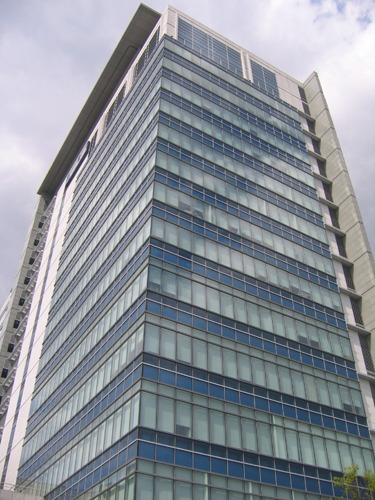
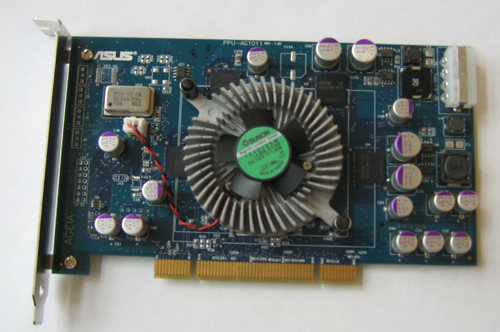


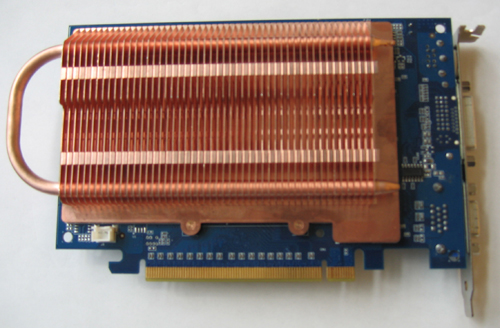
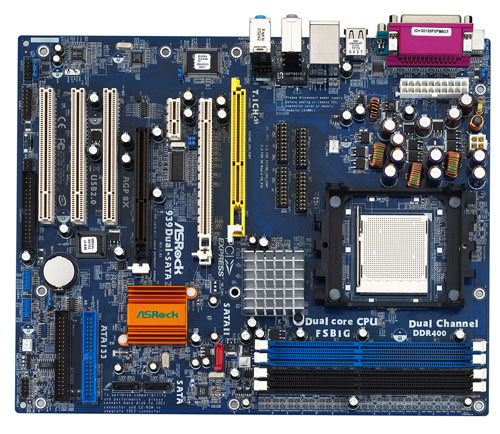
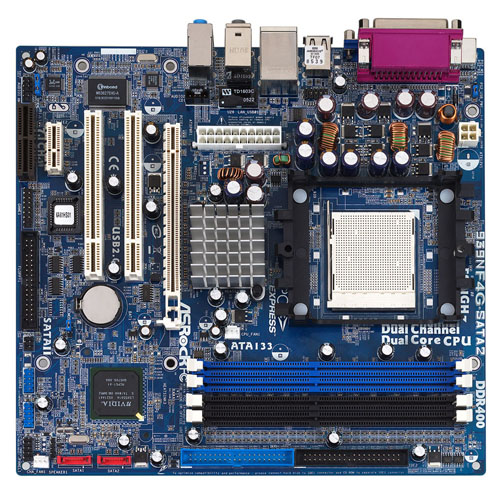









23 Comments
View All Comments
yacoub - Thursday, November 3, 2005 - link
Thanks! Any idea when we'll see that passively-cooled 7800-series card though?I'd love me some 7800GT passive aggressiveness.
nserra - Thursday, November 3, 2005 - link
I guess I will have to buy the ASROCK then.notposting - Thursday, November 3, 2005 - link
That was the only thing I read the article for myself, was anyone else doing an AGP/PCIe ULi board?I might be getting that Asrock board pretty soon if not.
KristopherKubicki - Thursday, November 3, 2005 - link
ECSgunblade - Thursday, November 3, 2005 - link
So, DFI is getting into the Graphic card market now?Good for them I guess, since they can push the Ati card together with the Crossfire MOBO. However, too bad Ati doesn't allow pre-OC the graphic card or else driver will reject it.
Ledu RF - Thursday, November 3, 2005 - link
First of all, i think that your article is very good but not complete, i can't understand how can you make a review about mobo makers like "ECS" and not make a review about others like Aopen who realy deserve to be in this place :-(.thanksKristopherKubicki - Thursday, November 3, 2005 - link
Well the problem was that I didn't really spend a lot of time there. ECS is actually a lot larger than AOpen too - I tried to get as many of the big guys in at once. There will be some more follow ups in the next couple days.Kristopher
imaheadcase - Thursday, November 3, 2005 - link
I wonder why did they put all the PCI/AGP/PCIx cards unside down? I always seemed like being on top was better for airflow. Was it from a old old case design or something? Nothing more annoying that when a website asks for a serial number is having to take card out instead of looking on top for SN :D Or cleaning PC out having to take out card to clean the fan on graphics card better.Anyway, asus is on right track putting GPU on top, will make watercooling installing much smoother to :D
SpatulaCity - Thursday, November 3, 2005 - link
The expansion cards are not upside down, your case is upside down. Just flip your case on it's head and everything should be good. :pBrian23 - Thursday, November 3, 2005 - link
ISA cards were right side up. PCI cards were made backwards so you couldn't accidently stick them in an ISA slot and short it out. Then when AGP came, they just moved the connector so it was physically impossible to put a PCI card in an AGP slot. AGP cards were made upsidedown because They didn't want to limit the number of PCI slots a system could have. At the time, mobos had ISA, PCI, and AGP all on the same board. With PCI in the middle, an extra slot would be lost if the AGP card was made right side up. Who would want a mobo with only 2 PCI slots? Anyways, now ISA is gone giving more space for more PCI slots so it's not that big a deal to give one up to flip the card over. Just make sure the mobo doesn't have parts in the way on that side of the card.